If your site is not too sunny, a slightly wetlands, then the ore is the perfect plant for its decor. He with ease comes to the places where most other plants grow badly. Ostrichnik, like a real mysterious guest from the forest, will make a highlight to your landscape design. Bright green "fountains" are attaching to themselves. Is it difficult to grow this plant? What kind of ore belongs to? Consider the basic rules for the landing of an ore, we learn about his varieties, and also get acquainted with the secrets of the full growth and development of an orette site.
Ostrichnik. Plant Description
Despite the fact that the orehouse looks very impressive, some gardeners are afraid to plant it in their plot. The fact is that this plant very quickly floats the space around himself and can exhibit other plants.
- Ostrichnik - a plant belonging to the family of onoclereva and the genus of fern.
- Ostrichnik is widely distributed in the European part of Russia, in the Caucasus, Siberia and the Far East. The plant prefers to grow in wet forests, near rivers and water bodies, on wetlands.
- Fern Ostrichnik got his name because of his similarity with an ostrich pen. The plant is sometimes called a ostrich feather, as well as a black fern or an ore hand.
- Ostrichnik is able to reach a height of up to 2 meters.
- Ostrichnik leaves thick and vertically standing. Can reach up to 1.7 meters long. Curiz leaves.
- Ostrichnik leaves are located in a special way. Large leaves are located along the edges and create a kind of funnel, in the center of which are smaller leaves with disputes.
- Ostrichnik leaves are beneficial to their bright emerald color. Leaves with disputes have a brown shade.
- Ostrichnik has a very powerful vertical root system with numerous side shoots.
- Ostrichnik leaves are divided into 2 types: sterile and sporing. Sterile leaves can reach almost 2 meters in length. The sporing leaves on the plant is only a few pieces.
- For the winter, sterile leaves fall out, and the sporing remains. Spring disputes from these leaves fall into the ground and sprout themselves.
Ostrichnik. Interesting facts about the plant
- Everyone knows that fern does not bloom. But an ancient legend says that every year on the night of the pagan festival of Ivan Kupalah Bipela blooms. In the middle of the plant, one unique bright red bout appears. A person who is lucky to find this flower will open an ancient mystery about the location of the treasure. Find a blooming fern was very difficult. After all, he bloomed exactly at midnight and just a few minutes. In addition, evil forest perfumes prevented brave foresters of the magic plant. The legend says that to enter the forest to such searches should be back forward to confuse spirits. Lucky will find not only wealth, but will also understand the language of birds and animals. The ancient tradition of searching for a flowering fern remained and still.
- Ferns are one of the most ancient plants on Earth, which existed during Paleozoa. Then they had gigantic sizes and were like more on the trees. Most of the modern species of ferns are represented by grassy forms.
- If you wanted to grow a mysterious ore in your site, then you will seem curious the fact that this plant can also be used in food. Indians of the United States and the Japanese love to eat young wija in food. As soon as they appear from under the ground, they look twisted "snails." Here they love to cook or in fresh form. The plant is endowed with healing and magical forces than and can be explained by the use of such "delicacy".
- Interesting is the fact that, right up to the 18th century, scientists could not solve the secret of the reproduction of ferns. Karl Lynnea gave these plants even the specific name - "creeping".
Ostrichnik in folk medicine
Ostrichnik does not apply in the treatment of any diseases in traditional medicine. But folk digits often use this plant as one of the main components for cooking brazers, infusions. In order to understand how this action can have this plant on a person, it is necessary to figure it out in its chemical composition. As it turned out, he is pretty rich:
- vitamin C;
- tannins;
- derivatives of Kumarin;
- essential oils;
- saponins;
- starch;
- alkaloids;
- fats;
- hydrocyanic acid;
- tannic acid;
- a nicotinic acid;
- carotene.
In traditional medicine, both the aboveground parts of the plant and rhizomes are used. Ostrichnik can help get rid of the following ailments:
- disorders of the gastrointestinal tract;
- painful menstruation in women;
- headaches of different origin;
- sleep disorders and the nervous state of a person;
- helminths in the human body;
- disorders of the respiratory system, attacks of suffocation;
- painful syndrome of various origin;
- epilepsy and convulsions;
- cough;
- mechanical damage to the skin, wounds.
Thus, an oreshitter with skillful preparation and combination with other medicinal plants can have an anesthetic, antiseptic, sedative, anti-chain, anticonvulsant, antitussive effect. The rhizomes of the ferns since ancient times are considered a good assistant for women who are experiencing too strong pain during menstruation. For external use, compresses from leaves are used, and for internal - alcohol tinctures and decoctions. Going to apply an ore for treating any ailments, be sure to remember:
- some varieties of fern poisonous and their independent use can be dangerous;
- pregnant women and women who feed the baby breasts should refuse to treat such folk remedies;
- the use of fish-based folk remedies is prohibited in the treatment of children. This also applies to all other medicinal herbs. Similarly, treatment can cause strongest allergic reactions;
- folk-based folk remedies will not be able to help in the treatment of acute phases of disease. It is always necessary to first contact the traditional doctor;
- an overdose of ore can have a negative impact on a person. It may feel weak, lubrication in the bones, the oppression of the respiratory function, slowed down pulse and lower blood pressure, convulsions, nausea, diarrhea.
Whatever wonderful properties have ferns, apply them for treatment is very careful and only after consulting a doctor.
Ostrichnik. Photo
Ostrichnik is one of the few plants that can decorate the shady corner of your garden. He will be great to look at the stone footsteps, along the tracks. If you plan the plant in a group with other plants, then place an ore on the background. Its high carved leaves will benefit from the beauty of the rest of the composition. Ostrivniki is also appropriate to disembark near the water bodies, in the mixture, in the Stone Garden. These spectacular plants can be combined with the following varieties of decorative plants in the garden:
- peonies;
- irises;
- lilyniki;
- hosts;
- ryabiki;
- tulips;
- irises;
- dolphiniums.
Ostrichnik can also be grown for cutting. With their help create a beautiful emerald background in bouquets. These plants are used for drying. Others in the dried form look no less effectively, of which are excellent winter bouquets and compositions.
Varieties of Ostrichnik
Scientists diverge in opinion, how many actually there are views of the ore ("Matteuccia" on Latin). But in the culture most often there are an icy Oriental Ostrichnik. In their decorative qualities, they are equally good, and inexperienced gardeners will be difficult to even distinguish them. Consider some of the features of each of these species.
Otrika ordinary
- The homeland of an ordinary island, or a worn outdoor, is the European part of Russia, the Caucasus and the Far East.
- A distinctive feature of this species is its high winter hardiness.
- The plant grows in the shape of a bush reaching in a height of 2 meters. The diameter of such a bush may vary from 100 to 120 cm.
- The length of one sheet, or wija, can reach from 25 to 100 cm. The leaves grow in the form of a cup of funnel.
- Leaves with disputes, or spores, can reach 60 cm long. Have a leathery and dense surface.
Eastern East
- Motherland of Eastern Ostrichnik consider Japan, China, Himalayas, Korea.
- Ostrichnik East prefers to grow on fertile and loose soils in broad-sized forests.
- Ostrichnik Eastern rarely forms thickets, preferring to grow single instances.
- Eastern Eastern reaches a height of 150 cm.
- Ostrichnik Eastern looks a little more graceful than the ore is ordinary, but requires a little more care and rather fertile soil.
You can buy an ore in many stores for gardeners. It is sold ready for planting seedlings in pots, which is very convenient.
Ostrichnik. Landing
Step 1. Choose a place to land an ore
You can choose to land an orefront as an open place and a place under the shadow of the trees. The most juicy and bright color of the plant leaves are purchased in the shade. On sunny plots, the orery can also grow, but then it will not reach its maximum height, and the foliage will be a little paler. When choosing a place to land an ore, be sure to consider the fact that the plant very quickly multiplies due to underground escapes and dispute.
- The place for landing an ore is better to choose in a lowland.
- The place can be both open and closed.
- Ostrichnik prefers shady places for growth, but can grow in a sunny place.
Step 2. Select the ground for landing
If you have sand and dry soil on your site, then this is not the best option for landing an ore. You will have to constantly and very richly water the plant, as the dryness of the soil for the plant is destructive. The remaining characteristics of the soil is completely undemanded. It can equally fully grow both on poor soils and fertile.
- Ostrichnik should grow on very wet soil.
- Soil necessarily should be fertile.
- Ostrichnik equally grows well on neutral and weakly acidic soils.
Step 3. Farming Landing Technology
- For landing it is better to choose seedlings older than 2-3 years.
- If you decide to plant a plant by a group, it is enough to choose 5-7 copies. Gradually, the plant itself will neglece.
- When planning the landing scheme of the terrible, it is better to stop your choice on natural form - an irregular triangle.
- Observe the minimum distance between plants at 30-100 cm.
Ostrichnik. Care
It's easy to care for the ore. If your site meets the requirements of the plant, then care is practically not needed. In a shady spot and on a wet soil, the oreman will show his decorative properties in all its glory.
- If the summer is too hot and dry, then you must control the soil moisture. Ostrichnik badly tolerates temperatures above 25 degrees. Spray its leaves and increase watering.
- Protect other plants from the "aggressive" ore. Create fences and artificial barriers.
- Approximately 2-3 years after landing, you will have to cut forward your landing of the orehouse in order to prevent the formation of unavigractive thickets.
- Eastern feeding is completely optional. But some gardeners love to pamper them with mineral or organic mixtures.
- Ostrichnik - winter-hardening plant. But with too severe and long winter, it can be covered.
How not to give an astringent "Spindle" by the site
Many gardeners are beware of growing an ore in the area, as he quickly captures the territory around him and displaces other plants. But there are several ways to help you form a place to grow an ore and limit it.
- The surest way is not to give an ore to "crawl" - it is to build a mechanical barrier. Around the reserved area for an orthomy, make a fence. For example, from slate pieces. The fence must be not only overhead, but also underground, since the oreshik is inclined to multiply and numerous underground escapes. The height of the fence should be at least 10 cm above the surface of the Earth and 10 cm under the ground. Some gardeners prefer for greater reliability to fencing not a plot, and each plant separately.
- Every year, inspect the place of landing of the orehouse and delete young plants in a timely manner, which appeared spontaneously.
- In order to keep the growth of the ore, ensure that it is not too comfortable. For example, limit watering. The plant will be forced to spend their strength not to reproduction, but for survival.
Reproduction of Ostrichnik
Reproduction of an ore spores
If you are gathered to propagate an ore spores, then prepare for a long and time-consuming process. Consider an approximate step-by-step instruction on self-extinguishing dispute:
- collect disputes need when they are completely ripe. This is usually happening in August or September;
- saruses are a dispute group. On the central sprigs of the Ostrichnik, find disputes that look like small brown tubercles. Put the sheet of paper under the sheet and spend a rigid brush or other similar tool. Ripe disputes are easily separated from the sheet and fall;
- the collected disputes must be collected in paper bags, where they can be stored for a very long time - for 5-6 years;
- in a paper package, the spores of the orehouse must warm well;
- after the spores of Ostrichnik are well succumbed, they are very easily cleaned. Remove strangers and husks. Golden dust should remain;
- prepare the nutrient soil in which the pores will be germinated. It may be a pure peat or leaf humus. Heat the land over the ferry. Thus, it is disinfected and filled with moisture. Fill the fit suitable containers;
- ostrivnik disputes just scattered on the surface of the soil. Close the container and put it in a warm and bright place;
- in order for the spores of the Ostrichnik sprouted, you need to not forget to regret your landings and follow the soil moisture. If the soil becomes dry, then it is necessary to moisturize it with a sprayer;
- you may notice the first excite of an ore day after 2 weeks. Those who fabricate with the extermination of the spore of the Ostrichnik for the first time may not notice this moment. The surface of the soil is covered with a specific thin green layer;
- if it seems to you that the shoots of the ore are too thick, then you can send them. Divide the soil into small squares or rectangles and place them in other containers filled with exactly so soil;
- all this time, the containers should be closed with a lid, film or glass. Continue also spray your landings and remove the condensate from the inner surface of the lid;
- some gardeners prefer to dive young routine shoots again;
- after the outdoor reaches 5-6 cm, you can start hardening the plant. For a while, open containers to teach an ore to new climatic conditions;
- to plant such seedlings grown from dispute at home, in open ground can be in 1.5-2 years.
Reproduction of Ostrichnik Vegetativeno
Ostrichnik can be multiplied with a faster way. But consider the fact that plants grown precisely from the dispute will be stronger and powerful.
- it is necessary to start a vegetative reproduction of an ore in the late spring, or at the end of summer - the first week of August, when the ripening dispute begins;
- separate part of the underground escape with several kidneys and transfer it to a new place;
- the length of such a shoot should be at least 20-30 cm;
- if you are going to put several plants in this way, then leave the minimum distance of 50 cm between them.
Now you know enough information to raise an emerald ore in your site without any problems. This plant will make the mysterious spirit of the forest into your landscape design. It is practically no need to care for this plant. Regularly inspect your landing, do not let the straw be too "aggressive" towards other plants. The most expensive and dark corners of your garden will be unusually attractive.


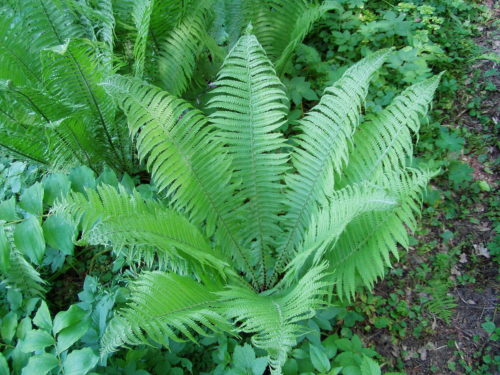
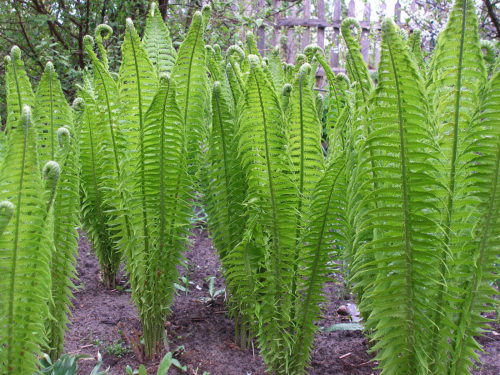
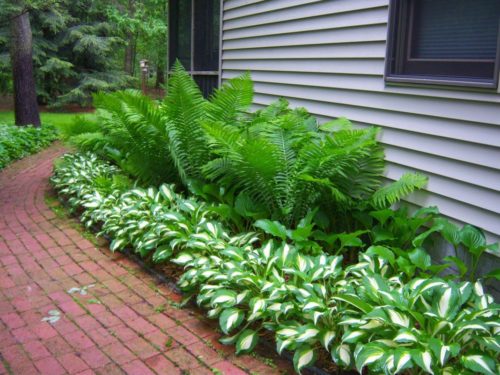
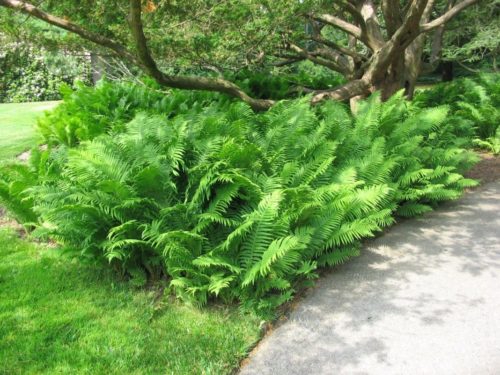
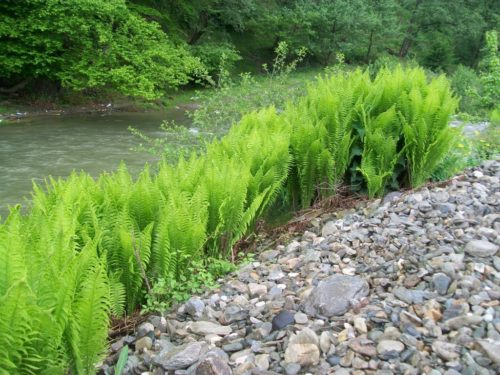
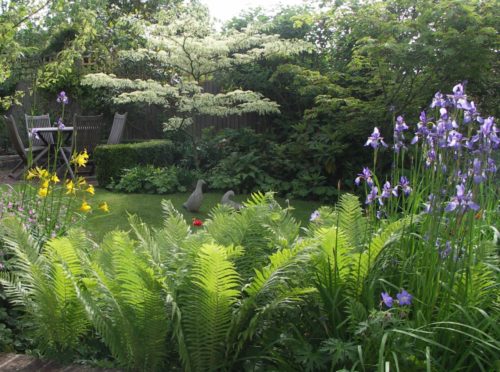
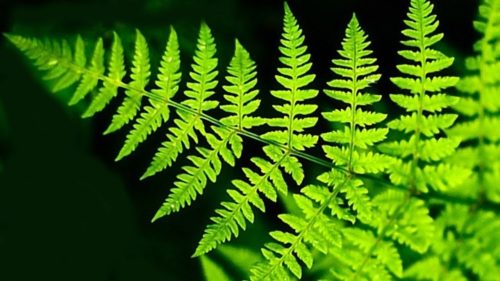


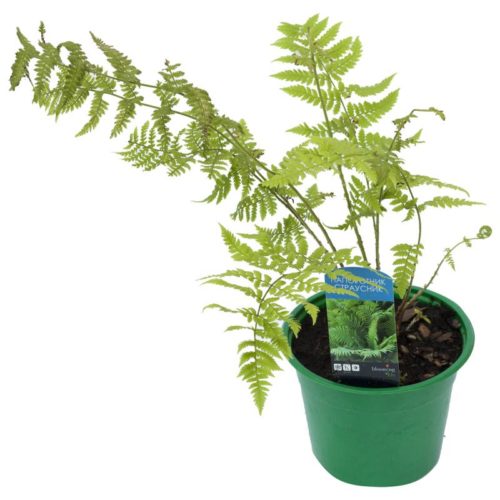
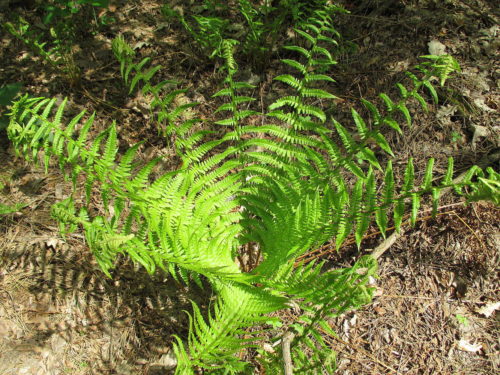
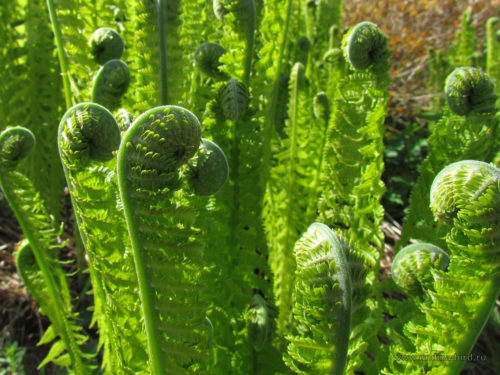
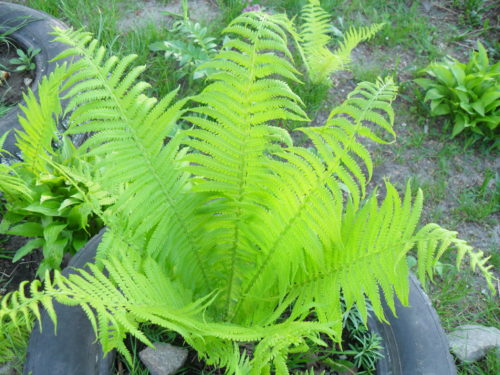












 Start a discussion ...
Start a discussion ...